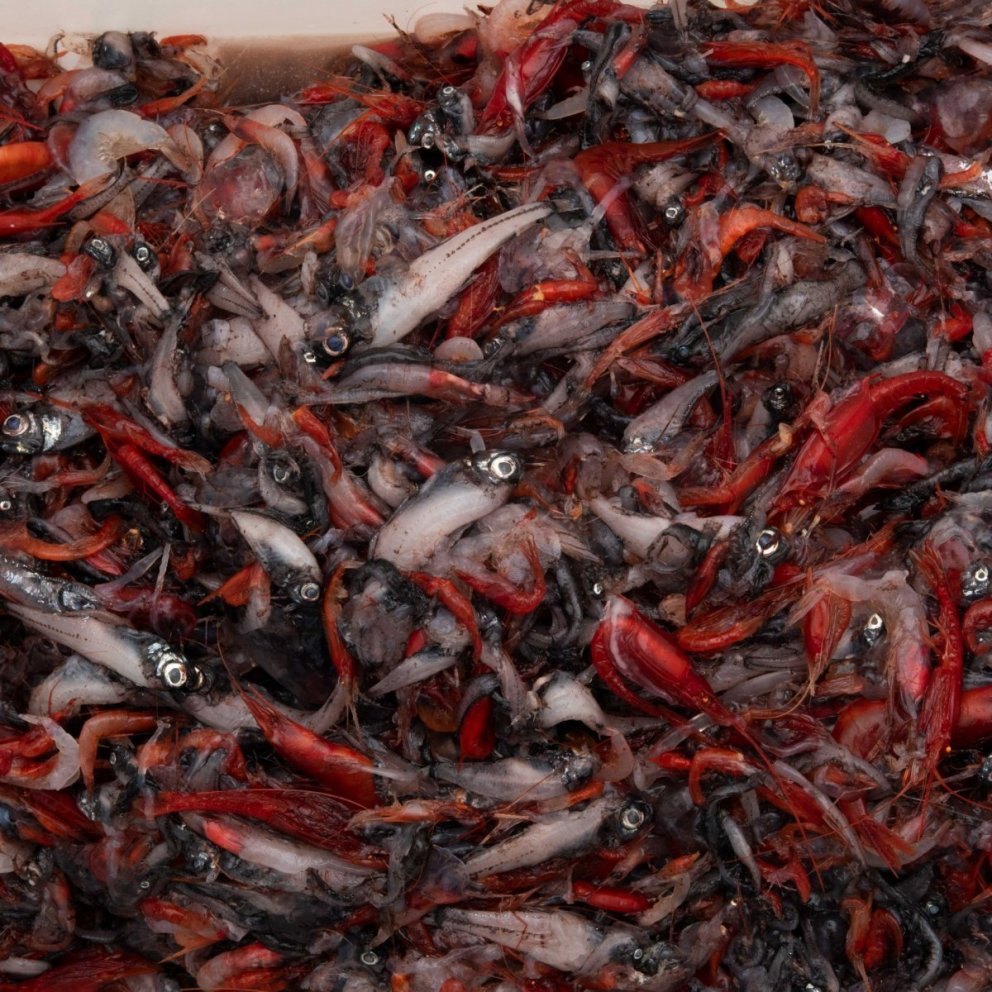- Research
- Fish tagging
- Lumpfish research
- Oceanography
- Seabed mapping
- Arnarfjörður
- Drekasvæði
- Ísafjarðardjúp
- Jökulbanki
- Jökuldjúp
- Kolbeinseyjarhryggur and adjacent area
- Kolluáll
- Langanesgrunn
- Látragrunn
- Nesdjúp
- Reykjaneshryggur and adjacent area
- Selvogsbanki
- South of Selvogsbanki
- South of Skeiðarárdjúp
- South of Skerjadjúp
- Southeast of Lónsdjúp
- Southwest of Jökuldjúp
- Suðausturmið
- Suðurdjúp
- Vesturdjúp
- East of Reykjaneshryggur
- Vestfjardarmid
- Seal research
- Whale Research
- Advice
- About
Report about sampling in the Irminger Sea and the Iceland Basin
11. May 2021
 Image: Svanhildur Egilsdóttir.
Image: Svanhildur Egilsdóttir.
A report (HV 2021-22) has been published on sampling that took place in the Irminger Sea and the Iceland Basin in July 2020 for the project “Ecologically and economically sustainable mesopelagic fisheries” (MEESO), funded by the European Union. A video describing the work on board is also out.
The main aim of the MEESO work was to study the abundance, distribution, and composition of mesopelagic organisms in relation to hydrography and phytoplankton productivity. The focus was on a longitudinal transect along ~61°50’N, from ~38°49’W to ~16°05’W, from the Irminger Sea and into the Iceland Basin and including a station in Grindavík basin.
Water density distribution along the transect confirmed a shallow mixed surface layer in the uppermost 50 m with moderate phytoplankton growth. Acoustic registrations identified two main deep scattering mesopelagic layers. A relatively strong backscatter at 18 kHz, composed mainly of mesopelagic fish maintaining a depth of ~300‐400 m during the day and migrating to above 100 m depth during the night. Another layer with minimal diel vertical movement with relatively strong backscatter at 38 kHz was evident at 500‐700 m, mainly composed of mesopelagic fish and crustaceans. Zooplankton biomass in the uppermost 200 m was generally higher in the Irminger Sea (c. 7.5‐10 g dw m‐2) than in the Iceland Basin (<5 g dw m‐2). Furthermore, zooplankton densities were generally higher in the 0‐50 m layer than in the 50‐200 m layer. Jellyfish (mainly Periphylla sp. and Atolla sp.) generally made up more than half of the catch of the macroplankton trawl in terms of weight. Approximately 130 species were identified, belonging to seven animal classes. The catch included approximately 50 fish species and about 40 species of crustaceans. The most abundant fish species were Benthosema glaciale, bristle mouths such as Cyclothone and Protomyctophum arcticum. Length‐weight relationships of a few of the most abundant fish species caught are reported.
